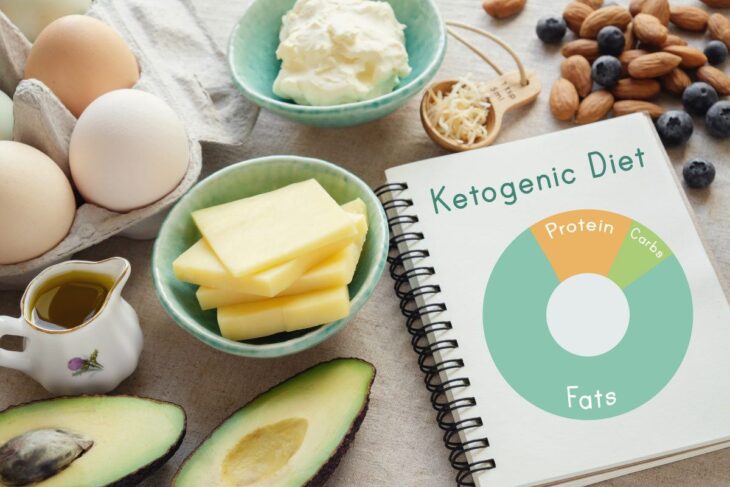The keto diet is a low-carb, high-fat diet. It has become increasingly popular over the past few years. It can be a beneficial way to lose weight fast and change your lifestyle. However, following a keto diet doesn’t come without challenges or temptations.
And while it’s not as hard as other extreme diets like Atkins or the Big Three, any deviation from your daily macronutrient allotment will have you feeling them faster than one of those juicy steak bites.
As such, working with your local keto diet specialist is vital if you want to succeed long-term. If you’re unsure of whether the keto diet is right for you, you can transition into it slowly. For example, you can begin with a more relaxed version of the clean keto diet, such as the Lazy Keto diet. This beginner-friendly version offers an easy and convenient way to stick to your diet and enjoy variety, since it doesn’t require you to count macros or restrict certain types of food. Whichever version you decide to begin with, make sure you transition into the diet carefully in order to avoid eating disorders. Below are some practical tips that will help keep you on track.
On the same note, if you want to target your abs during workout, Tumy-trimmers.com recommends using ab stimulators.

Source: achievalife.com
Contents
1. Stay Hydrated
The keto diet is low in carbohydrates, which usually results in low water intake levels. Not only will this put you at risk for dehydration, but low sodium levels can also lead to fatigue, brain fog, and achy joints.
To avoid this, be sure to stay hydrated. This doesn’t only apply to those on the keto diet, but to everyone, really. It’s important to drink water, even when you don’t feel like it.
This is because when you don’t drink water, your brain thinks you are dehydrated and signals you to drink more water so that you don’t end up feeling sick.
2. Eat Breakfast Like a King and Queen
Many people try the keto diet hoping to lose weight as quickly as possible. While this is one way to get in shape, it’s not optimal for long-term results.
In fact, research suggests that dieters who lose significant amounts of weight too quickly are more likely to end up gaining it back than those who take more moderate approaches.
That’s why it’s essential to focus on healthy eating habits, like getting at least one to two cups of high-quality, low-carbohydrate carbohydrates each morning.
Compared to a diet that doesn’t include breakfast, those who eat the most frequently experienced lower levels of insulin and cortisol, markers of stress and anxiety, respectively.
Moreover, they experience improved mental alertness, better attention and processing speed, and more energy throughout the day.

Source: laboratoiregiphar.com
3. Exercise Regularly
The keto diet is a low-carb, high-fat diet designed to kick-start your body’s fat-burning processes and help you lose weight fast. Want to know the best part about it? You don’t have to starve yourself for hours to achieve these results.
Exercise on its own can help you lose weight, but the keto diet is unique because it closely mimics the metabolic state your body is in when you’re fueled by ketones.
This means you get more out of your workouts because your body doesn’t have to go through the extra energy expenditure required to break down carbohydrates.
Research suggests that exercise reduces the risk of becoming overweight by lowering insulin resistance and blood pressure.
4. Try Intermittent Fasting
If you’ve ever heard of intermittent fasting, you’ve probably heard it mentioned in the context of the keto diet. This diet, which involves going without food for a preset period each day, has been linked to improved insulin sensitivity and potential benefits to heart and brain health.
There are many different intermittent fasting protocols, many involve a 12-hour fast followed by a 20-hour “feeding” window.
There’s evidence that this type of fasting can help your body burn more calories and lose weight, especially if you stick to a regular fasting schedule.

Source: harvard.com
5. Track Your Macros
There is a lot of talk about macros in the keto world, but in reality, you don’t have to count or track them. That said, it’s important to know your daily macronutrient ratios to make sure you’re staying on track.
The keto diet is high-fat, moderate-protein, and low-carb, so it should be easy for you to stay within your macronutrient guidelines. The most important thing to remember is that if you’re eating large portions of fat, you should eat lean protein with every meal.
If you’re not sure what type of macronutrient ratios you should be following, you can work with a dietitian to get an accurate assessment. They can also help you develop a macros-specific eating plan to help you reach your weight-loss goals.
6. Drink the Right Keto-Friendly Beverage
One of the most common challenges people face while following the keto diet is staying hydrated. When you’re on a low-carb diet, which is naturally high in fat and protein, it’s easy to become dehydrated. This can have several negative effects on your body, including an increased risk of kidney stones, heart disease, and osteoporosis.
To prevent these issues, try to drink plenty of water, low-calorie beverages, and even low-sugar juices like those made from tomatoes, cucumbers, and oranges. Stick to one or two of these per day, and you should be fine.
If you tend to get particularly thirsty during the day, you can try adding a slice of lemon to your water bottle. This has been shown to help prevent kidney stones.

Source: Stocksy.com
7. Don’t Be Afraid to Cheat
One thing that many people struggle with when following a keto diet is staying within their daily macronutrient allowance. Many dieters who find it difficult to stick to one meal each day find that the best way to stay on track is to cheat once a week.
This can be helpful when you’re trying to get through the intense cravings that often accompany the end of a diet.
Conclusion
Keto is a diet that’s becoming more and more popular, especially as people are looking to lose weight. The keto diet aims to put your body into a state of ketosis, where it burns fat instead of carbohydrates for energy.
For those looking to jumpstart their weight loss, a ketogenic diet could be an effective option. A keto diet involves eating a low-carb, high-fat diet in which the primary goal is to eat a reduced amount of carbohydrates and a moderate amount of protein.
By restricting carbohydrates, the body begins to burn fat for fuel instead of glucose. In addition, the liver begins producing three ketones per liter: acetone, acetoacetate and β-hydroxybutyrate. These ketones can reach toxic levels when present in abundance.
However, some consumers may experience harsh side effects from long term ketosis without adequate carb intake. Therefore, it’s important to follow the recommended amounts of carbs as well as consume them at the right time.
